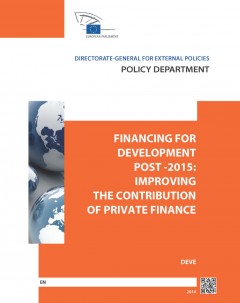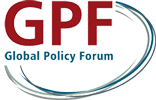
This report on financing for developing countries was commissioned by the European Parliament's Committee on Development and co-written by Eurodad. The report finds that government spending is the largest domestic resource, domestic private investment is also growing, outflows of private financial resources are very large, real net financial private flows are overstated, and ODA is the largest flow to least developed countries.
Global public finance cannot be directly substituted by private finance, as it pays for public goods, is more predictable and counter-cyclical, and can be targeted at the poorest countries. Global private finance mainly goes to higher income countries and has difficultly targeting MSMEs or paying for public services.
Leveraging private finance has faced many problems including in proving additionality, in transparency and lack of ownership, and poor evidence of development impact. Instead, we should focus on how international public flows can reduce barriers to private sector investment through investing in essential services, and how the EU can alter policies including by reforming investment treaties, curbing illicit financial flows, supporting fair debt workout mechanisms and developing responsible financing standards.
More specifically, this paper found that:
- Government spending is the largest domestic resource in most developing countries, and is growing rapidly in many countries, but more than three billion people live in countries where government spending is extremely low – less than purchasing power parity (PPP) USD 1,000 per person each year.
- Domestic private investment is also growing. Public and private investment, taken together, have grown as a proportion of GDP, from 24.1 % in 2000 to 32.3 % in 2011.
- Outflows of private financial resources are extremely large. Most are not productive investments in other countries but repayments on loans (over USD 500 billion in 2011), repatriated profits on foreign direct investment (FDI) (USD 420 billion) or illicit financial flows (USD 620 billion).
- Figures greatly overstate the real net financial private flows to developing countries. FDI is the largest resource flow to developing countries, but outflows of profits made on FDI were equivalent to almost 90 % of new FDI in 2011. In addition, FDI includes the reinvestment of earnings from within the ‘destination’ country: not an inflow.
- Official Development Assistance (ODA) is the largest flow to least developed countries and those with the lowest levels of domestic resources. By contrast, 70 % of FDI in developing countries in 2011 went to just 10 countries, with China alone accounting for over a quarter of total FDI.
